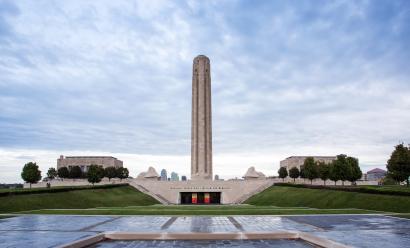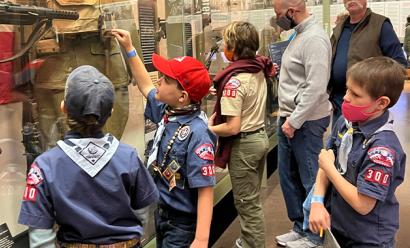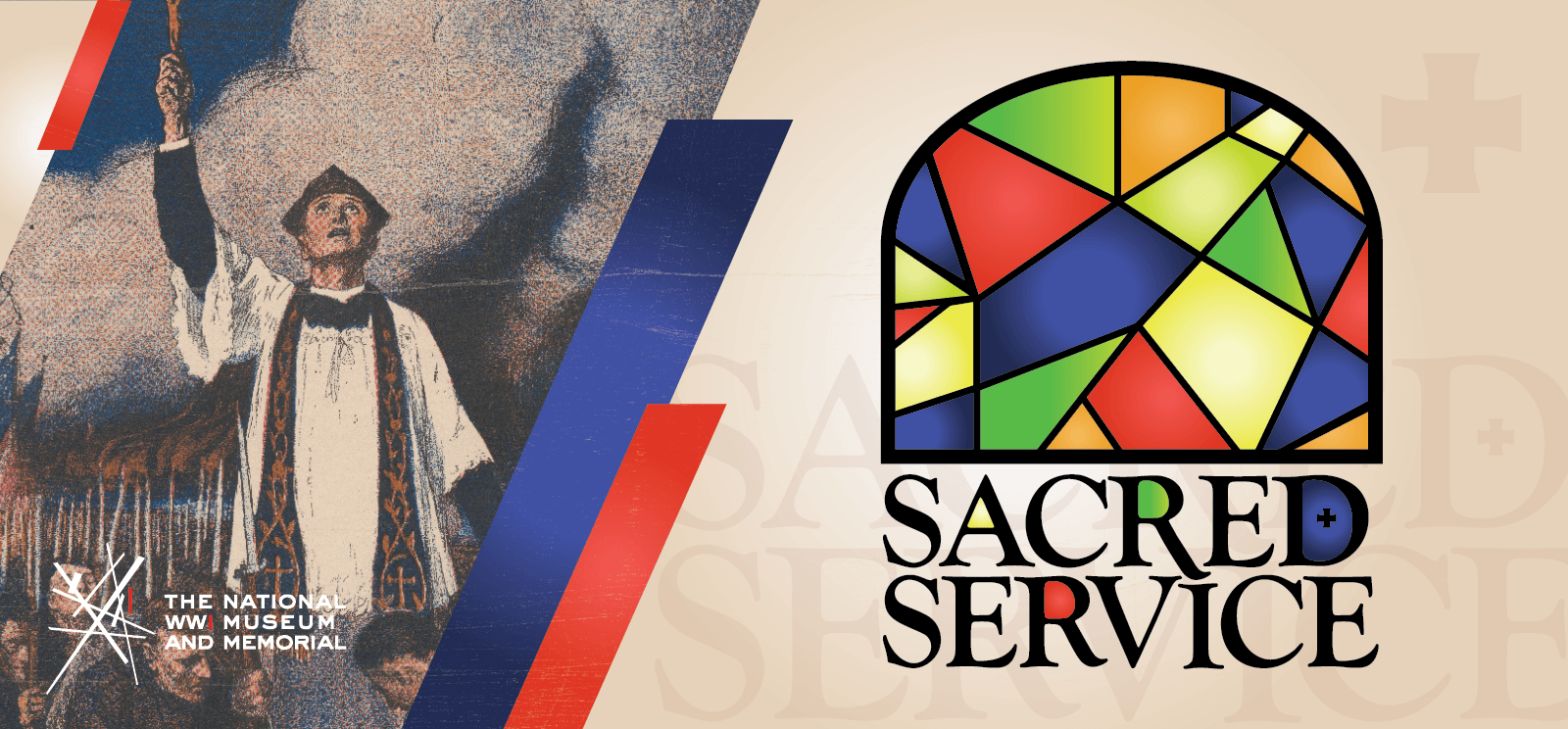
“A good chaplain is as valuable as a good general.”
—British Field Marshal Sir Douglas Haig, Dec. 1915
The year is 1914: In media, politics and the pulpit, leaders around the world are portraying the start of the Great War as a modern-day struggle against evil. With hundreds of thousands enlisting to fight, religious guidance and leadership become priorities. Chaplains – from many faiths – answer the call to duty.
Rabbis, pastors, monks, imams, priests and more served with the fighting nations of World War I. Many were as unprepared for the horrors of war as the soldiers they served, yet strove to bring courage, comfort and compassion to millions – on and off the battlefield.
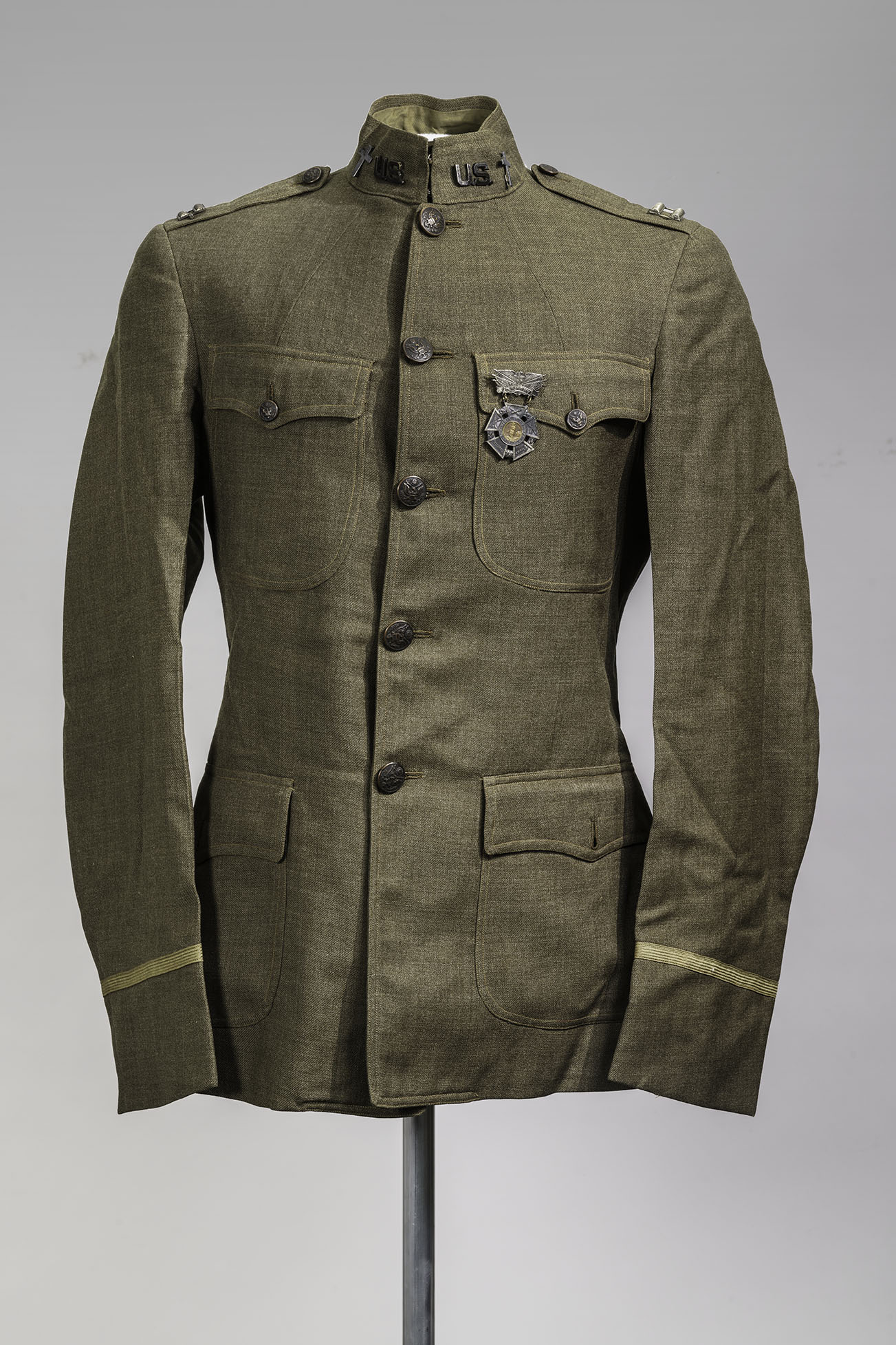
Chaplain C. W. Mayfield's AEF tunic
United States, c. 1917-1919
Object ID: 2023.146.2
Chaplain C.W. Mayfield had his AEF tunic tailored at Goldberg's in Louisville, Kentucky while he attended the Army Chaplain School at Camp Zachary Taylor. Stitched on the interior pocket of this tunic is the maker's label: “All Measures Kept for Two Years / M. Goldberg & Sons / Louisville's Leading Tailors” with C.W. Mayfield's signature underneath.
To rotate, left click+drag or one-finger drag. To zoom in, double click or pinch. To pan, right click+drag or two-fingers drag.
Sacred Service explores the rarely told, true stories of chaplains who armed warriors with inspiration and compassion through the Great War at its most hellish.
Guiding visitors on a journey through the physical and spiritual environment of war, the exhibition incorporates artifacts, documents, film, artwork, images, stories, poetry, first-person accounts and interactive 3D digital models. Visitors come face-to-face with the men of faith whose actions reflected courage on the battlefield and projected hope into hearts and souls.
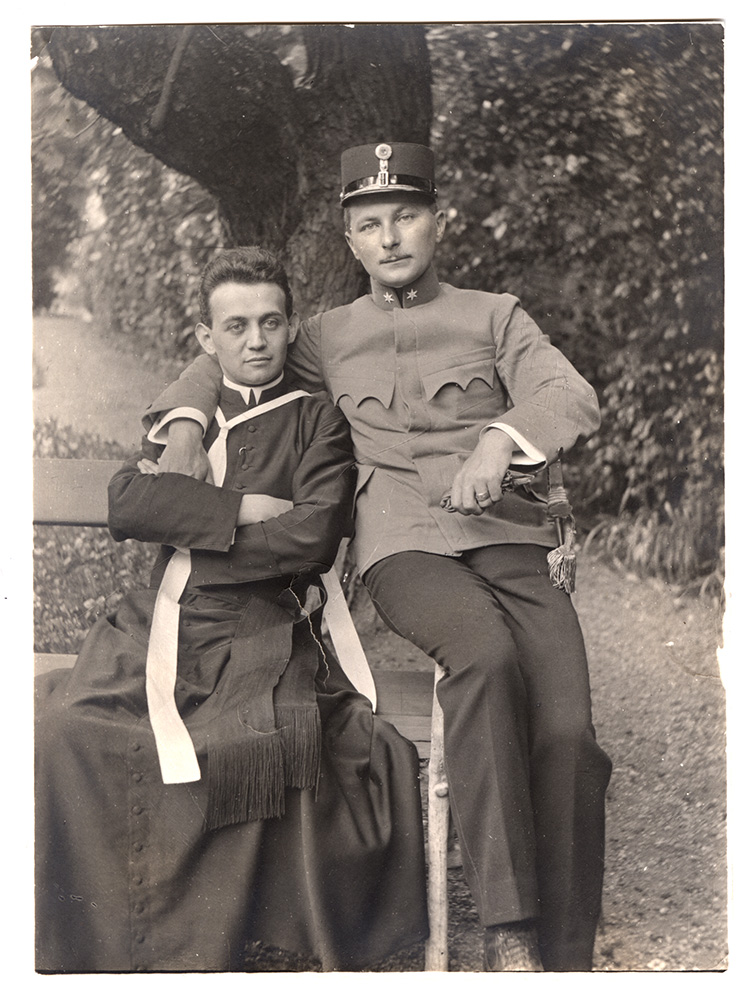
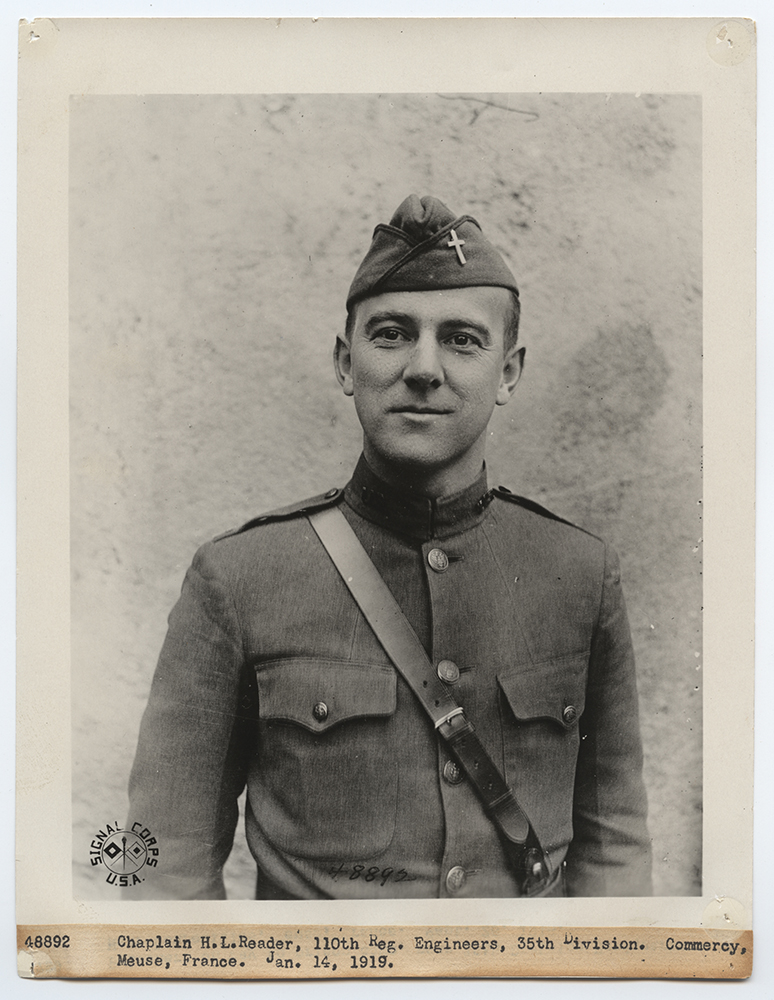
Photographic portrait of Chaplain H. L. Reader, 110th Reg. Engineers, 35th Division
United States, c. 1917-1919
Object ID: 1926.28.497
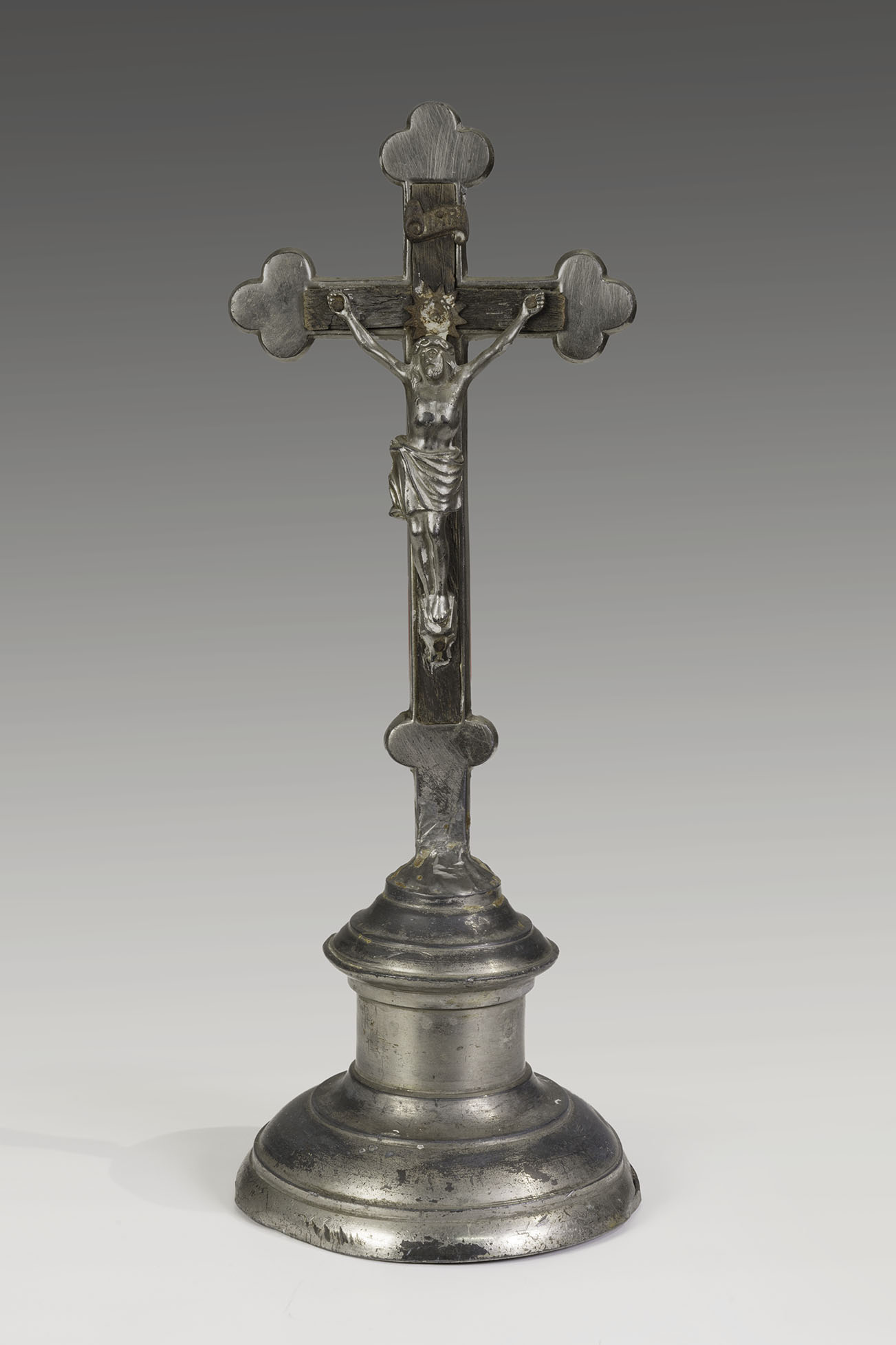
Reserve trench altar crucifix
France, c. 1914-1918
Object ID: 2023.79.1
Amid the misery and suffering of the war, the image of Christ tortured to death on a cross carried new significance for many service members. Roman Catholic worship services frequently featured a crucifix, whether the service was held in a trench or on the side of a mountain.
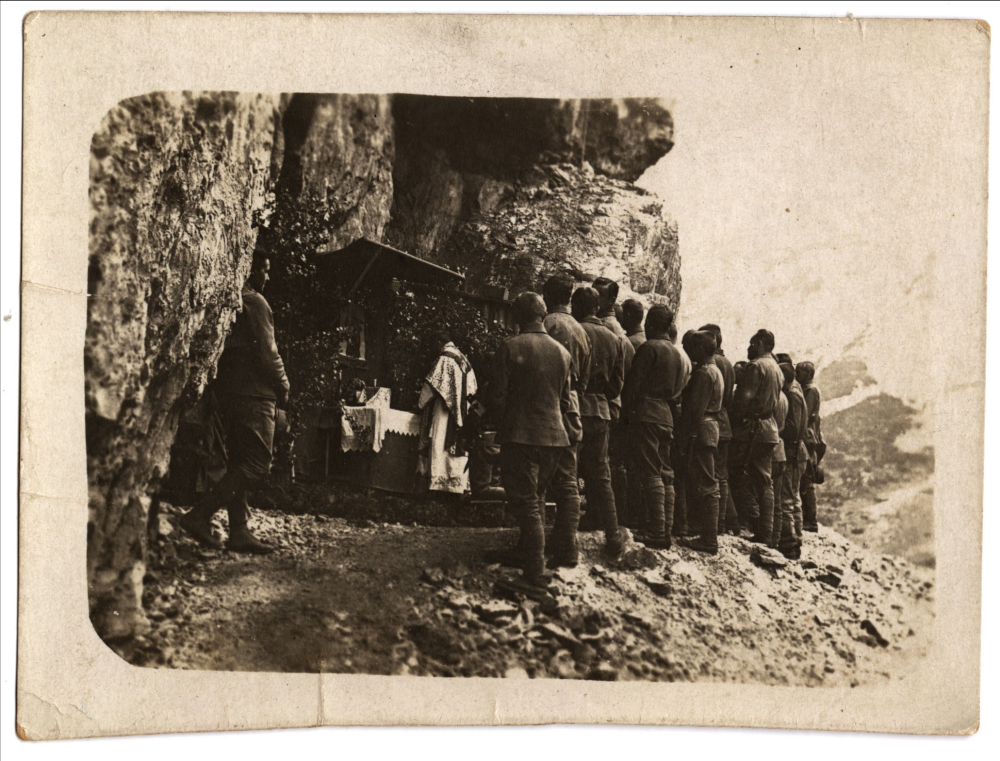
Photograph of soldiers attending a field Mass on a mountainside
Austria-Hungary, c. 1914-1918
Object ID: 2019.47.3217
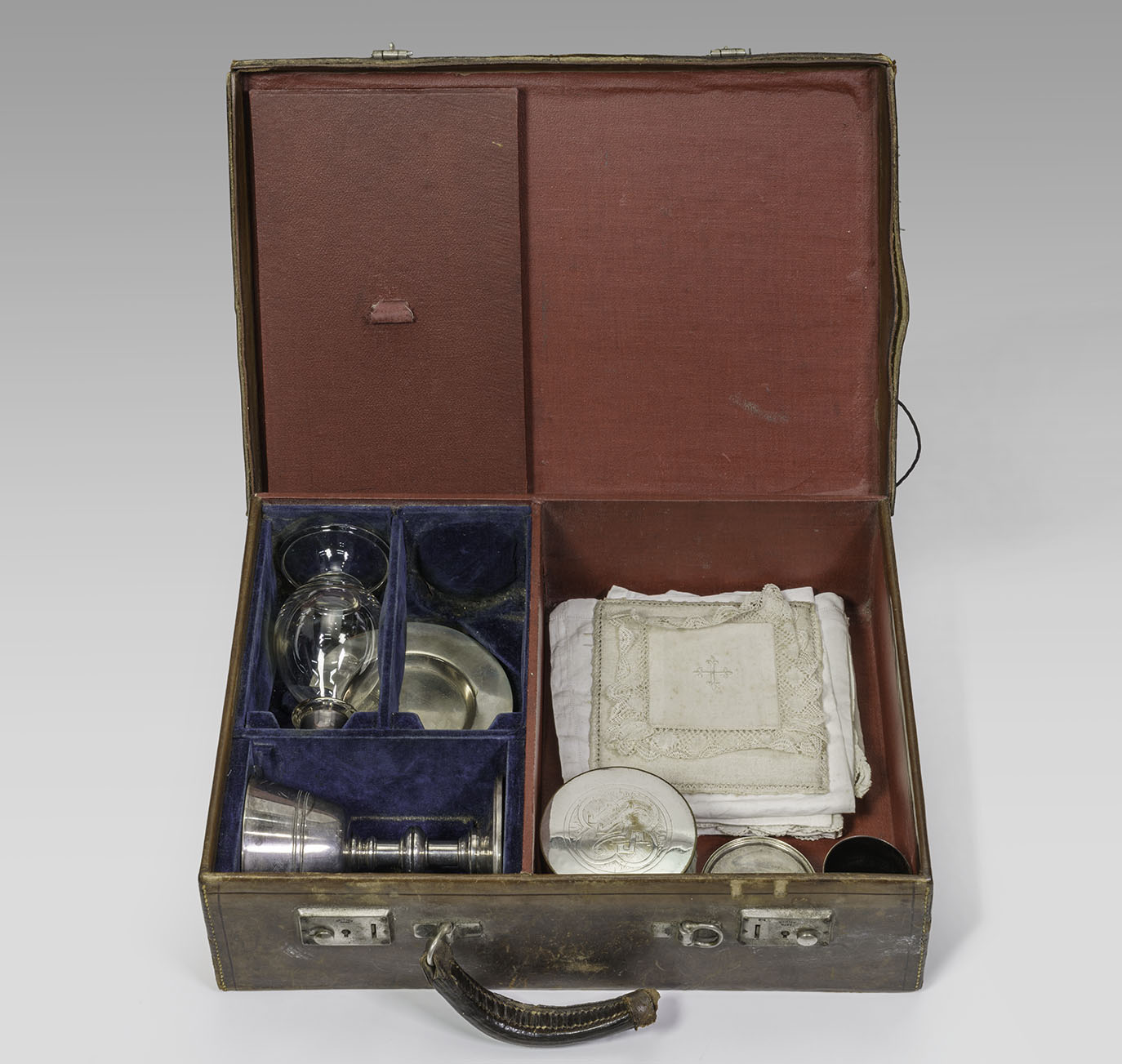
Field communion set
Great Britain, c. 1914-1918
Object ID: 2023.148.1
Chaplains prepared men to act with courage in chaos and, if necessary, to face their deaths. Holy Communion was an essential religious sacrament for many Christian service members. Recreating the Last Supper of Christ, the sacrament embodies the meaning of suffering and sacrifice, as well as the hope for redemption and eternal life. It held profound relevance to many who might die in the face of war.
This set includes a case, chalice, two patens, wine ewer, cup, pyx, two altar linens and two palls.
Discover how chaplains in WWI forged new ideas of religious tolerance and cooperation through sight, sound and story.
They were sources of friendship and comfort, leaders of worship and examples of character. Ultimately, chaplains inspired others to work together in support of each other – and the common good.
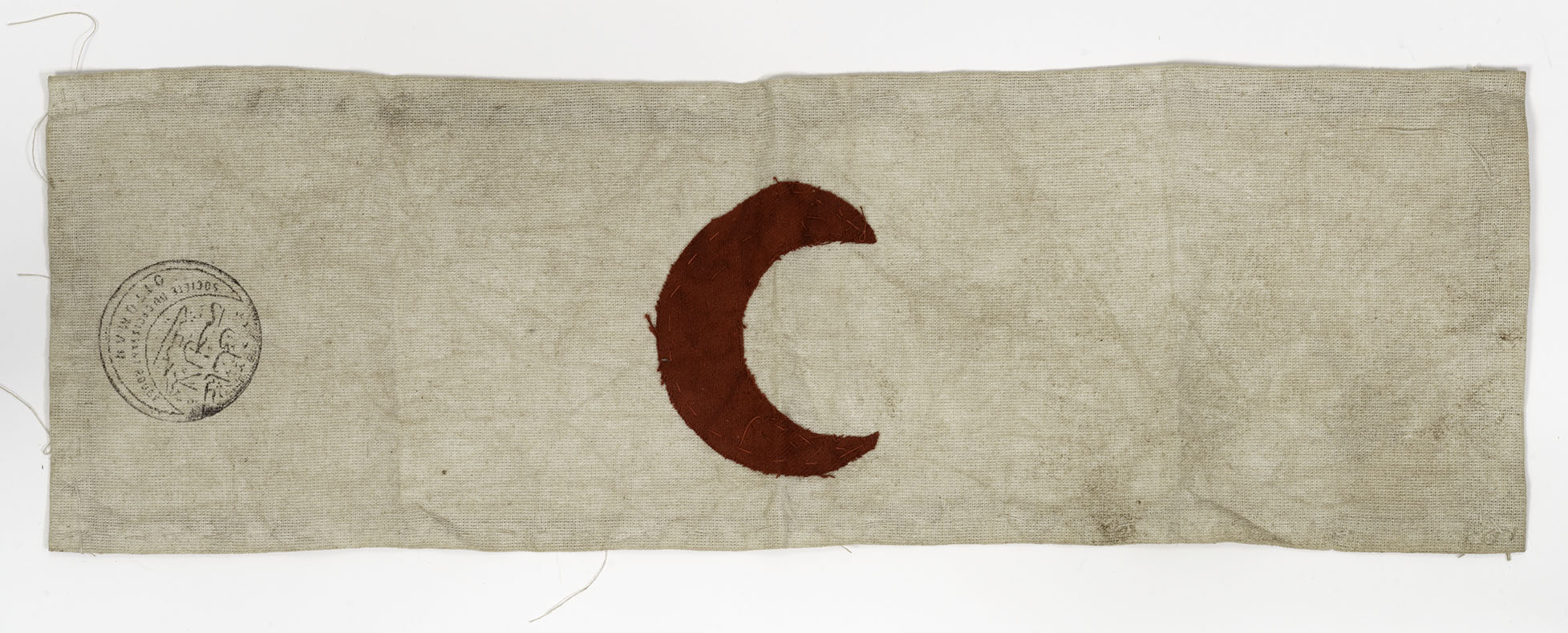
Hilal-i Ahmer (Red Crescent Society) Armband
Turkey, c. 1914-1918
Object ID: 2023.178.1
The Red Crescent Society is the name of the Red Cross Society in countries with a majority Muslim population. Like their chaplain counterparts in the Red Cross, many imams in the Ottoman Empire and Egypt worked with and for the Red Crescent Society during WWI, playing an important role in providing humanitarian and medical aid to troops.
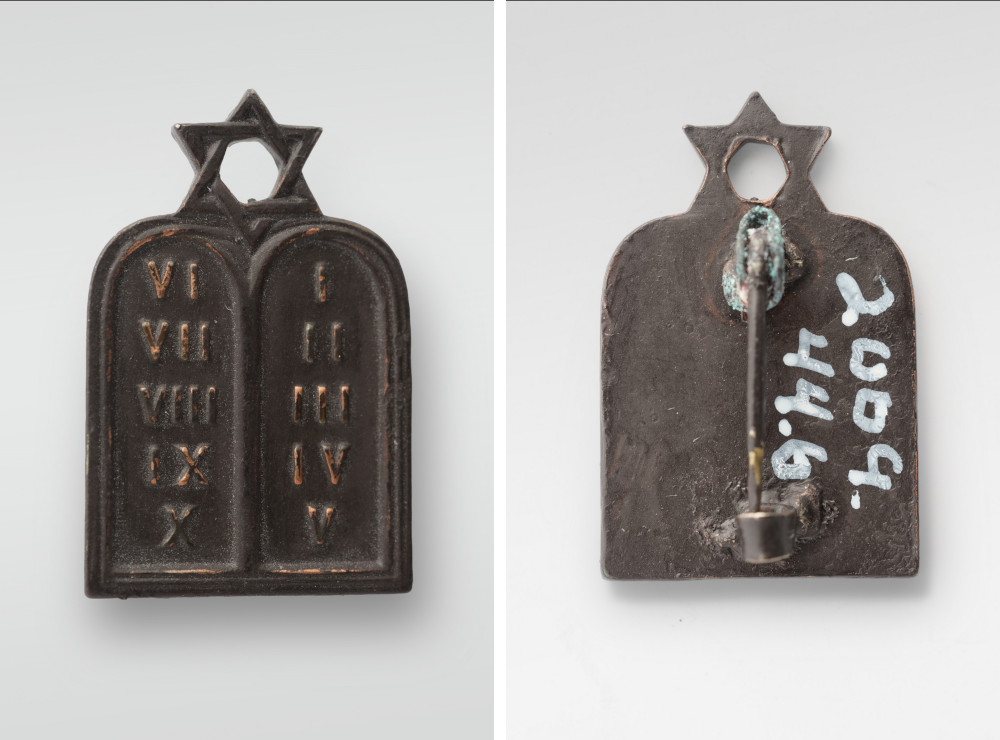
Officer's collar insignia devices for a Jewish chaplain
United States, c. 1917-1919
Object ID: 2009.44.6
Jewish Americans (and other faith groups such as Mormons and Christian Scientists) wanted chaplains for their service members in the military. On Oct. 6, 1917, Congress passed a bill opening the chaplaincy to Jewish and other faith groups. Jewish chaplains often had to confront antisemitism; AEF rabbi Lee Levinger once humorously remarked that part of the chaplain’s job was to protect soldiers from their real “tyrants and oppressors, the line officers.”
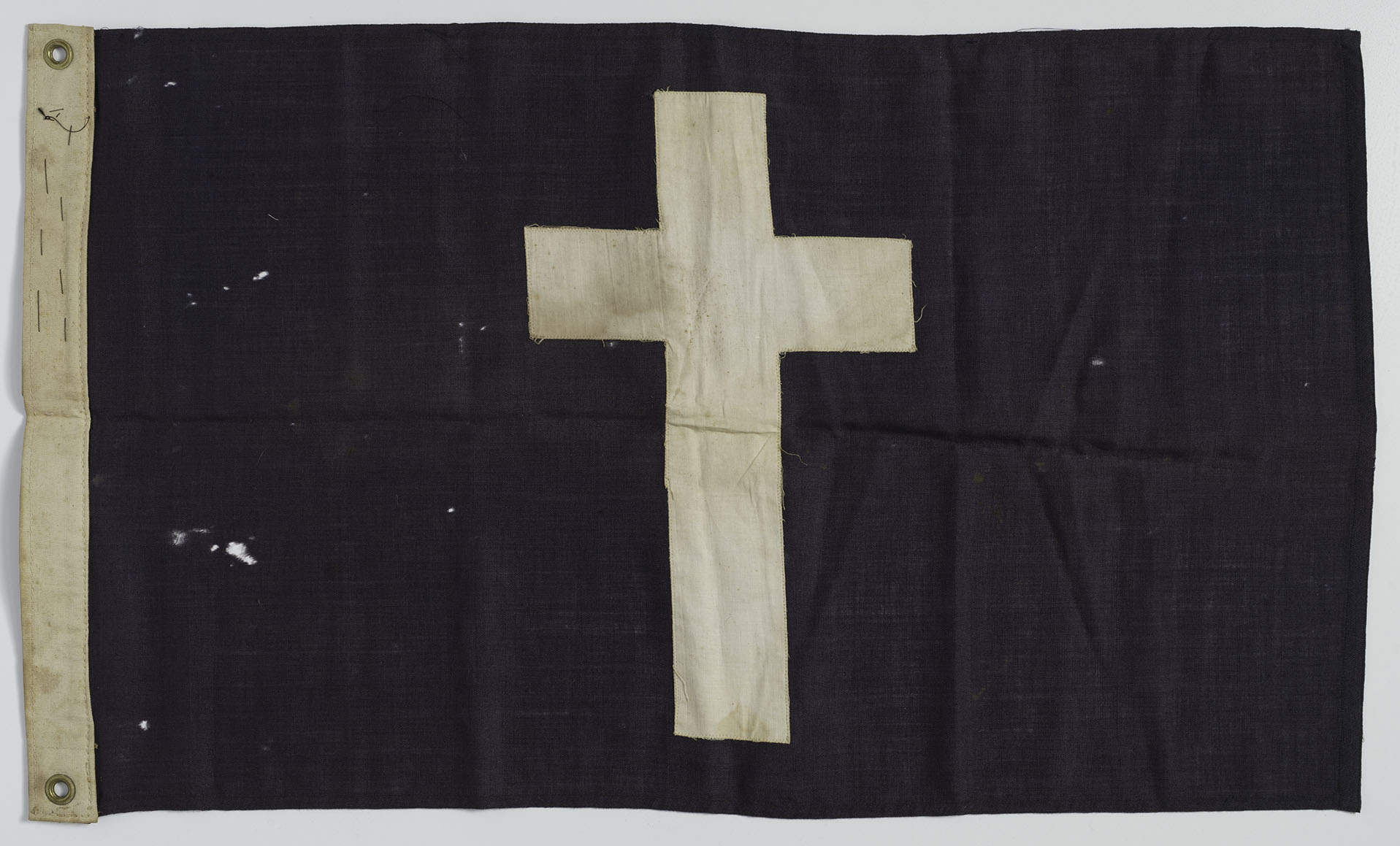
Senior chaplain's flag of the 77th Division
United States, c. 1917-1919
Object ID: 2023.146.1
When the senior chaplain of the 77th Division, John J. Allan, was reassigned to the General Headquarters (GHQ) Chaplain Office, he recommended Rabbi Elkan Voorsanger as his replacement – the first time in history a Protestant chaplain recommended a Jewish rabbi for promotion – stating he “is well liked by the other chaplains and will fit the bill.” Voorsanger carried this flag as the senior chaplain of the 77th Division.
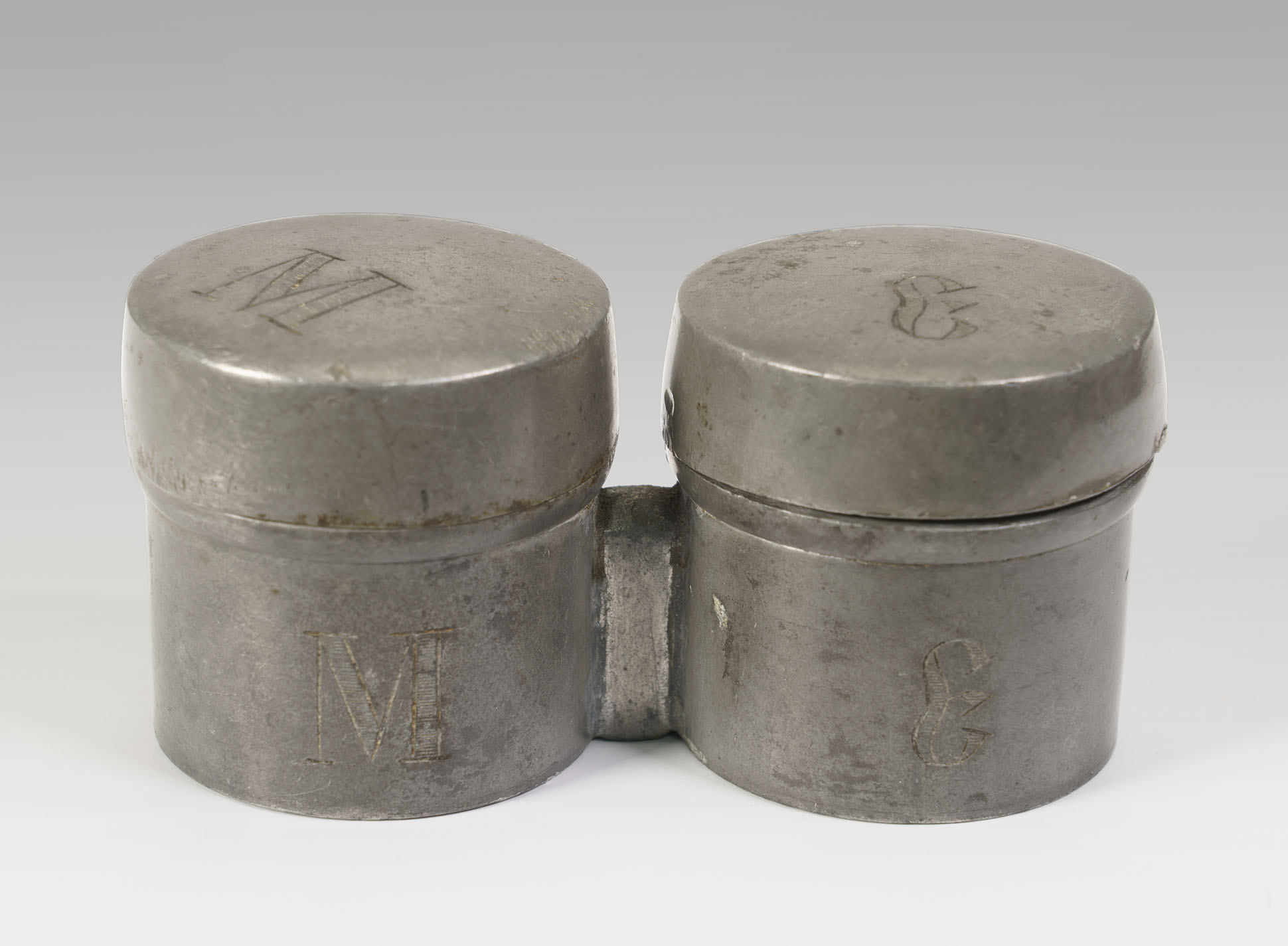
Sacramental oil container
Russia, c. 1914-1917
Object ID: 2023.103.1
A soldier in war was regarded as someone in permanent danger of death: in periculo mortis. Through sacraments (religious rituals imparting divine grace) chaplains offered servicemen the comfort of blessings, love and forgiveness of sins in times of anguish, hardship or death.
Find a powerful view of the Great War beyond combat tactics and troop movements: the equally intense, yet singular experiences of the chaplains – whether faithful, doubting or visionary – as they counseled their legions.
Sacred Service sheds light on how they provided care to souls in a war where sacred grounds and crumbling cathedrals confronted service members of every country from Russia to the United States – transforming shared hardship into hope and helping sow the seeds for a more compassionate post-WWI world.
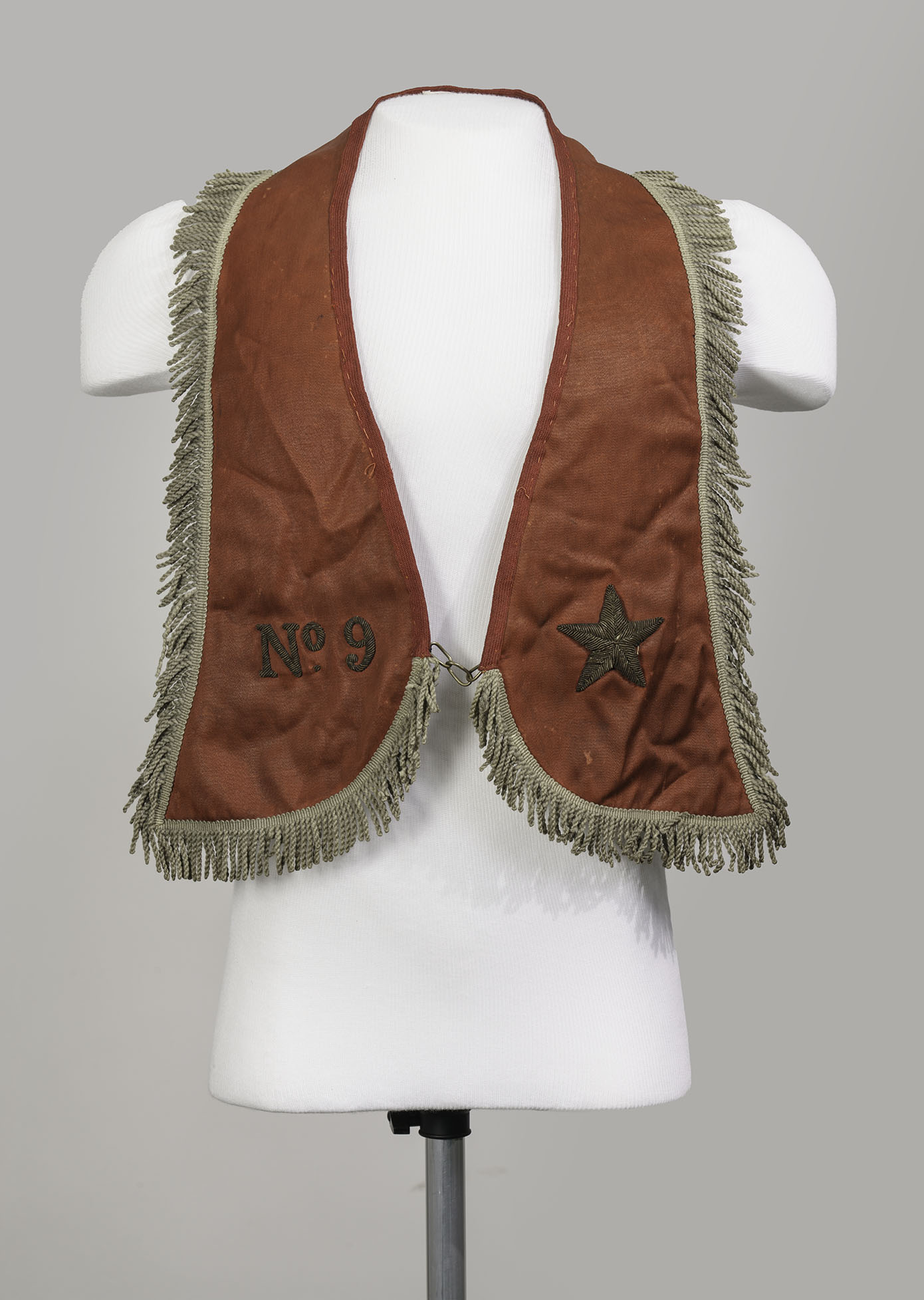
9th Field Hospital chaplain's stole
Italy, c. 1914-1917
Object ID: 2023.244.1
Chaplains often supplemented their front line service by providing spiritual and emotional support to wounded service members recovering in field hospitals. In these medical facilities, chaplains comforted injured troops and lifted spirits through ministry, letter writing assistance and compassionate conversations. The work of chaplains in wartime hospitals was just as vital as ministries directly on the battlefield.
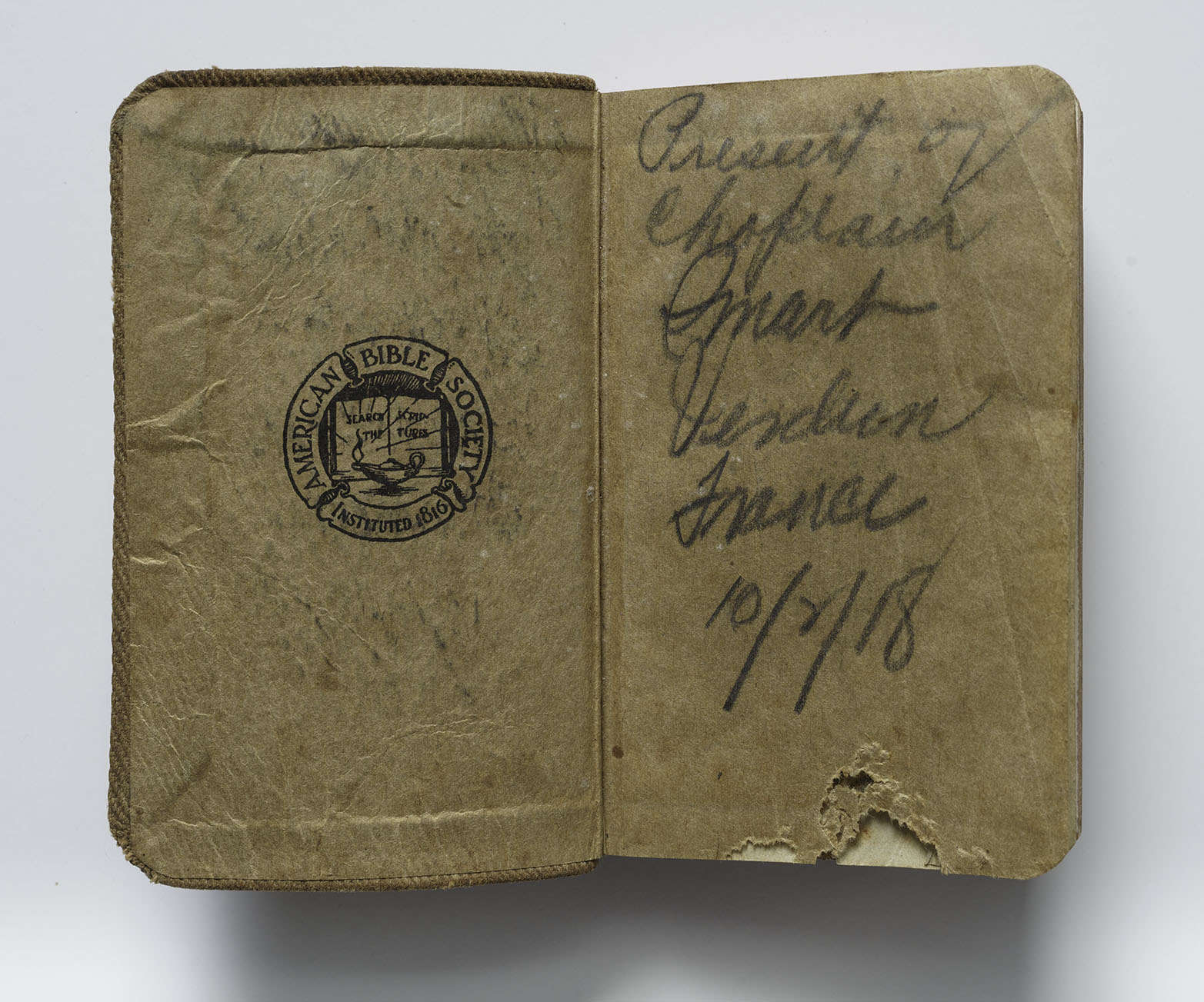
The New Testament
United States, 1918
Object ID: 2023.112.1
American Expeditionary Forces (AEF) New Testament given to Sgt. George Hendrix on Oct. 8, 1918 by Chaplain Daniel Smart at Verdun. Chaplain Smart died of wounds received in action on Oct. 15, 1918 and is buried in the Meuse-Argonne American Cemetery.
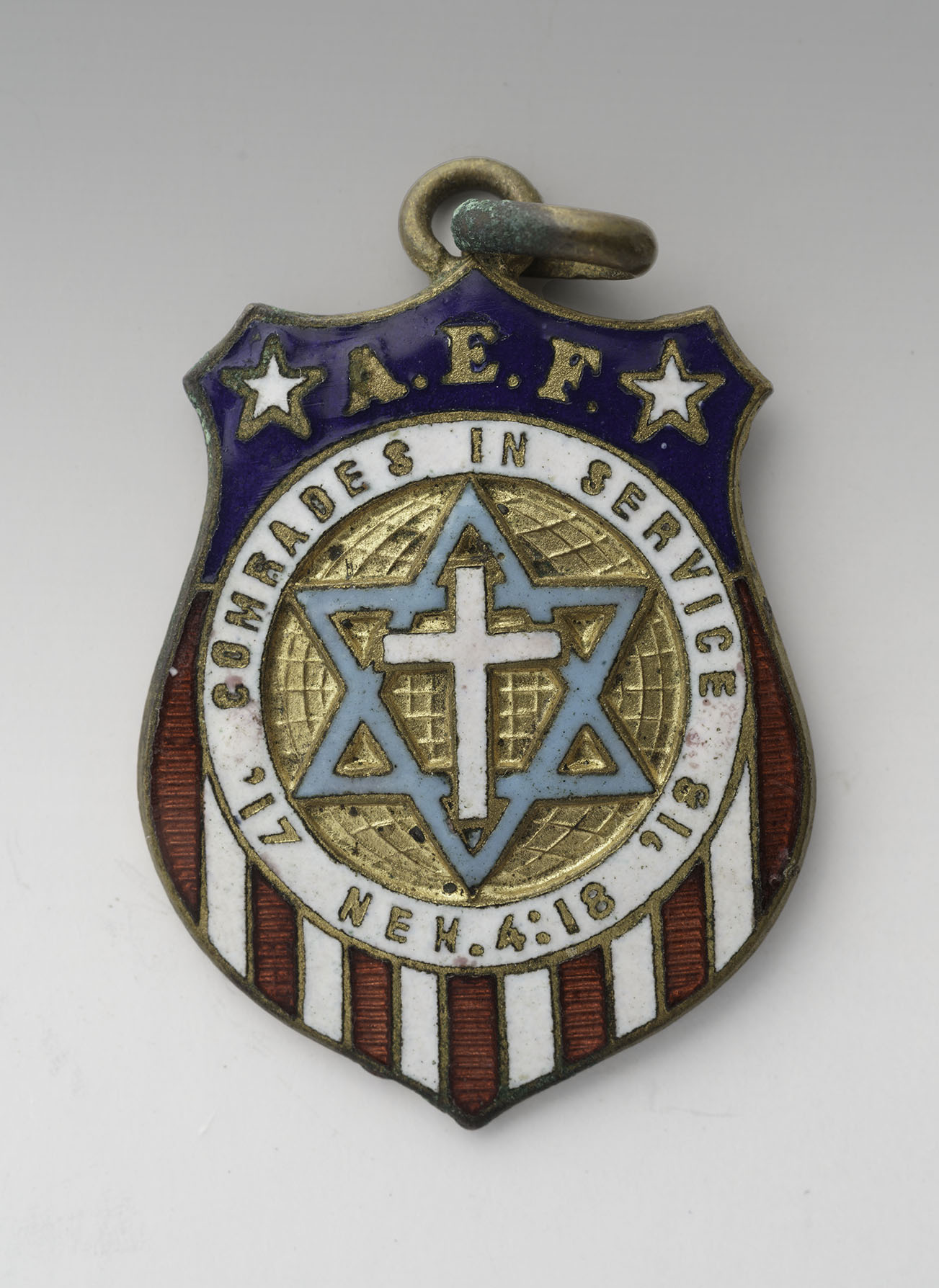
Comrades in Service charm
United States, 1919
Object ID: 2023.243.1
“Comrades in Service” was a short-lived veterans' organization conceived by AEF chaplain leader Bishop Charles Brent, "to bind Americans together as Comrades to work for a better America upon their return home.”
“Comrades in Service” lasted less than a year in 1919. When a rival group holding caucus in the Cirque de Paris proved more popular with troops waiting to return home, Bishop Brent threw “Comrades in Service” into the ranks of an organization to be known as “The American Legion."
Sacred Service is an initiative of The Center for Religion, Culture and the Great War, made possible through generous support from Lilly Endowment Inc.

This exhibition is supported in part by the City of Kansas City, Missouri Neighborhood Tourist Development Fund.

